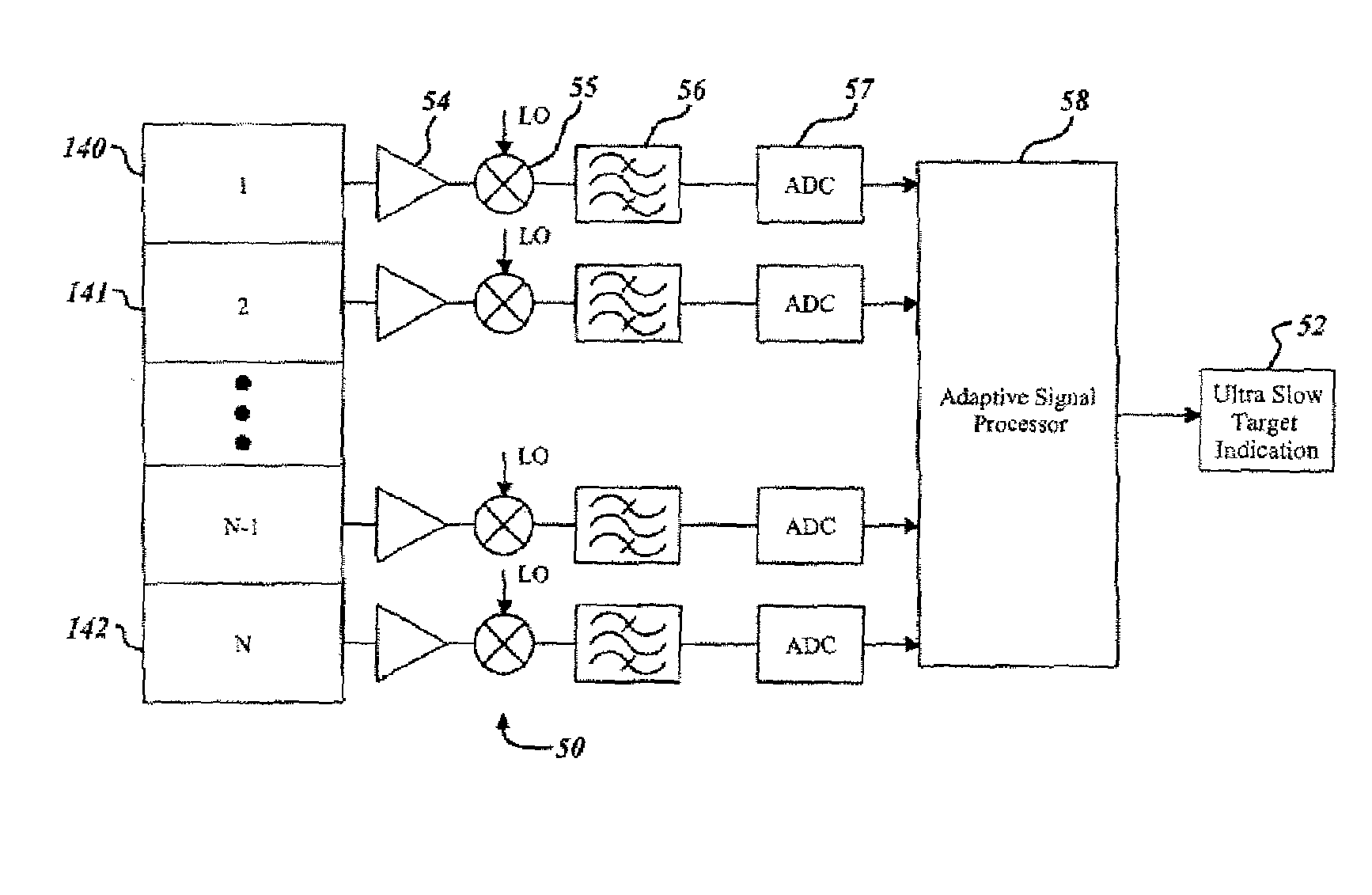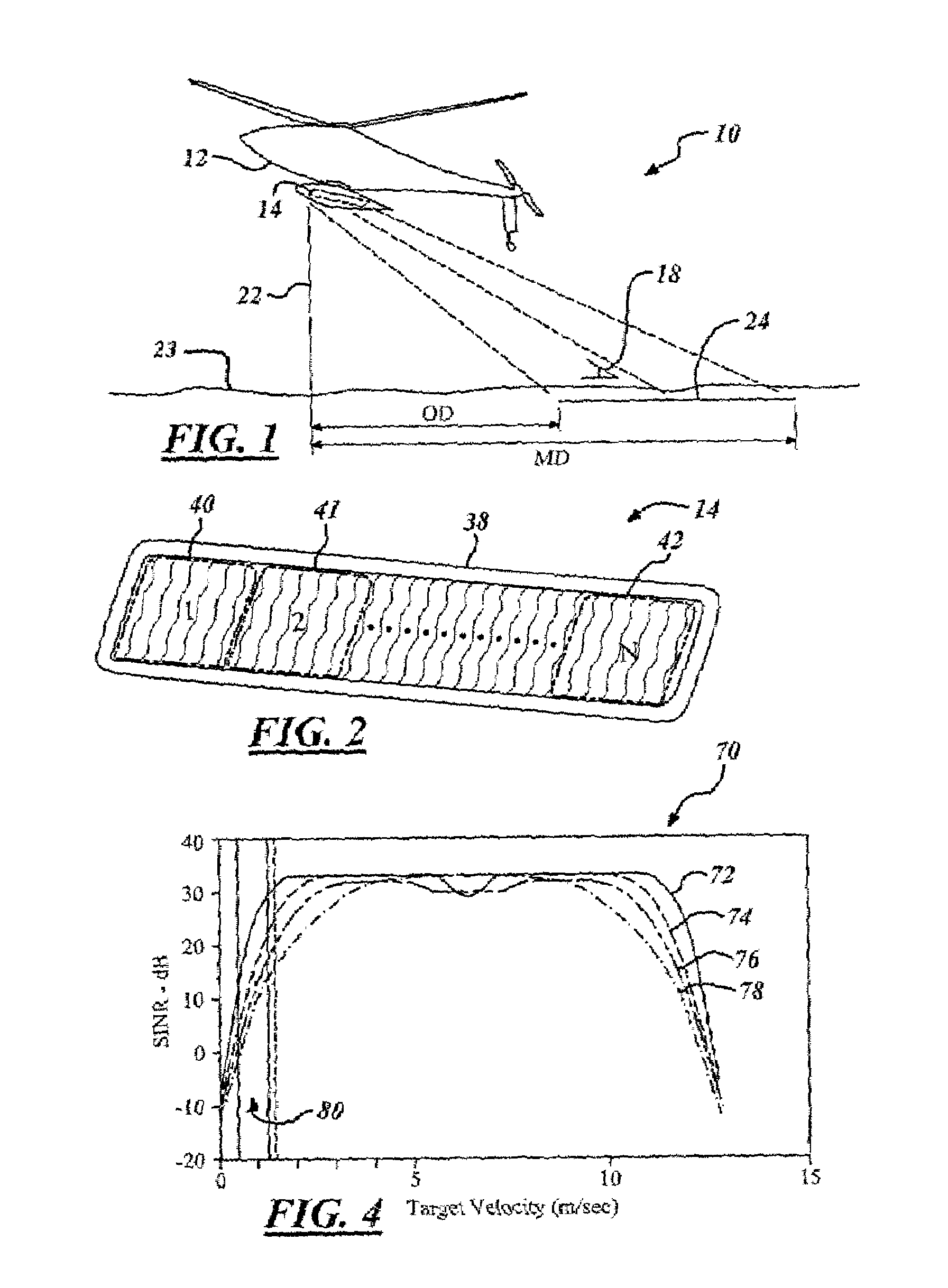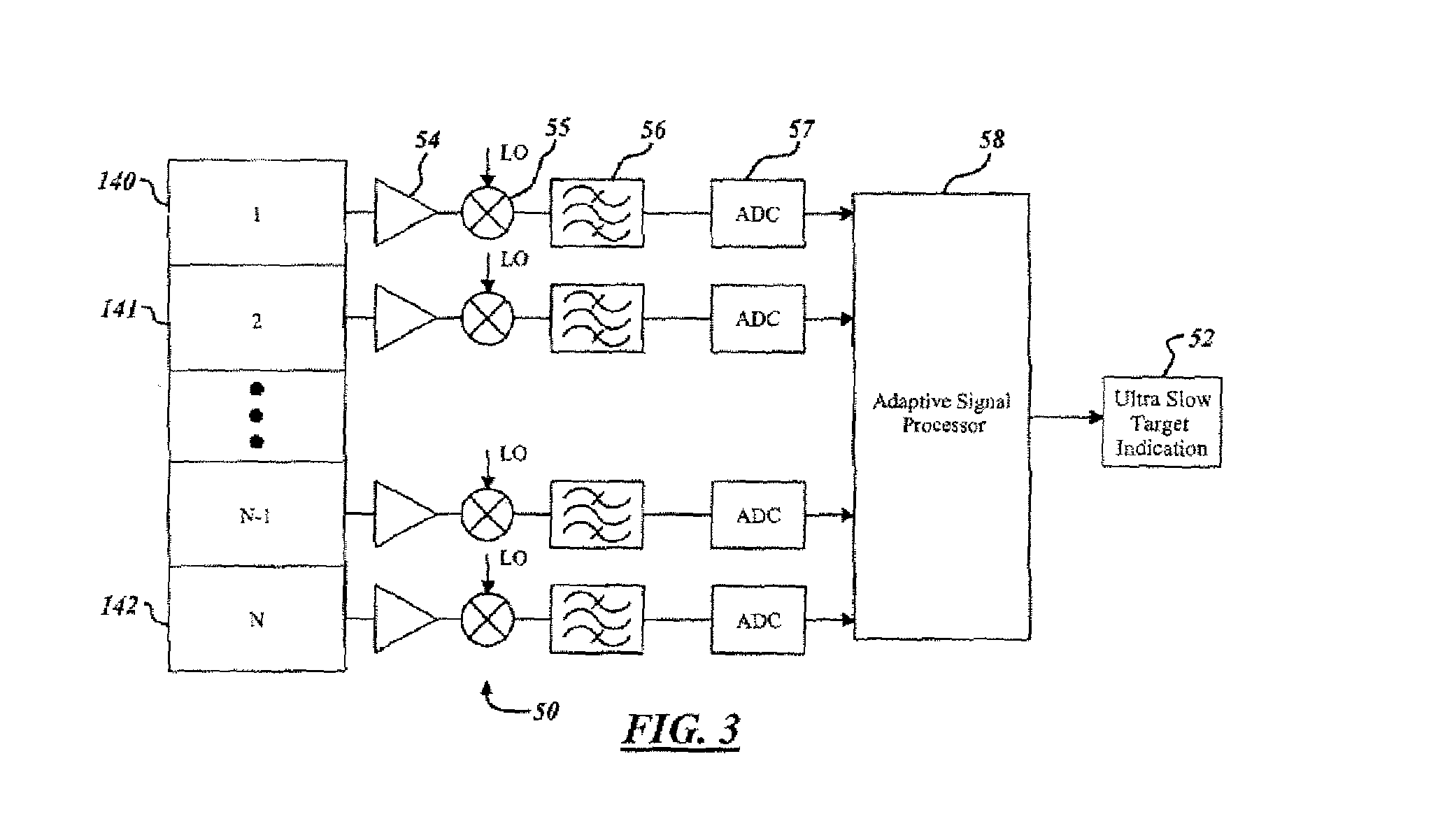Anti-personnel airborne radar application
- Summary
- Abstract
- Description
- Claims
- Application Information
AI Technical Summary
Benefits of technology
Problems solved by technology
Method used
Image
Examples
Embodiment Construction
[0020]In the following figures the same reference numerals will be used to identify the same components of a given embodiment.
[0021]The anti-personnel airborne radar application (AARA) for human tracking provides an airborne radar system for wide area search and tracking of an individual, individuals or groups of individuals that are walking over the ground. The invention employs a radar system with an operating frequency directed primarily for minimal-to-no foliage cover terrains. However, while arboreal coverage is appropriate where the individual is not masked by the foliage, the invention is not necessarily directed toward applications requiring penetration of denser arboreal or multi-layer canopies. Because the operating frequency of a radar system is well understood by person of skill in the art, discussion is not necessary for a proper understanding of the invention here presented.
[0022]The AARA is the result of the combination of a radar system originally designed for ground...
PUM
 Login to View More
Login to View More Abstract
Description
Claims
Application Information
 Login to View More
Login to View More - R&D
- Intellectual Property
- Life Sciences
- Materials
- Tech Scout
- Unparalleled Data Quality
- Higher Quality Content
- 60% Fewer Hallucinations
Browse by: Latest US Patents, China's latest patents, Technical Efficacy Thesaurus, Application Domain, Technology Topic, Popular Technical Reports.
© 2025 PatSnap. All rights reserved.Legal|Privacy policy|Modern Slavery Act Transparency Statement|Sitemap|About US| Contact US: help@patsnap.com



